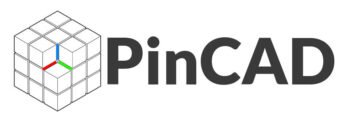Why learn AutoCAD and why Essential for Career Success
In today’s competitive job market, possessing the right technical skills can be the key differentiator between landing your dream job and being overlooked. Among these sought-after skills, AutoCAD stands out as a vital tool for professionals in fields such as architecture, engineering, construction, and design. Whether you’re a seasoned expert looking to enhance your portfolio or a newcomer eager to make your mark,
understanding AutoCAD is essential for navigating the intricate world of design and drafting. This powerful software not only streamlines the design process but also fosters creativity and precision, enabling you to bring your ideas to life with stunning clarity. In this blog post, we’ll delve into the myriad benefits of learning AutoCAD, exploring how it can elevate your career prospects, improve your workflow efficiency, and equip you with the competitive edge needed to thrive in your chosen industry. Join us as we uncover the transformative impact of mastering AutoCAD on your professional journey!
Overview of AutoCAD and Its Applications
AutoCAD, developed by Autodesk, is a powerful computer-aided design (CAD) software that has revolutionized the way professionals across various industries create and communicate their design ideas. First introduced in 1982, AutoCAD allows users to draft, model, and visualize complex structures with remarkable precision. Its versatility makes it a staple in fields such as architecture, engineering, construction, product design, and even interior design.
The core functionality of AutoCAD lies in its ability to produce detailed 2D drawings and 3D models, enabling users to bring their concepts to life. With an extensive array of tools, users can easily create floor plans, elevation drawings, and intricate mechanical designs. Moreover, AutoCAD supports a variety of file formats, making collaboration with other software programs seamless and efficient.
In the architecture and construction sectors, AutoCAD is indispensable for generating blueprints and technical drawings that adhere to industry standards. Engineers leverage the software for designing everything from intricate machinery to robust infrastructure projects.
In the world of product design, AutoCAD empowers designers to sketch prototypes, assess functionality, and refine aesthetics before moving to production. Beyond traditional applications, AutoCAD is also utilized in urban planning, landscape design, and even animation—demonstrating its far-reaching impact on technology and creativity.
As industries continue to evolve, proficiency in AutoCAD not only enhances job prospects but is also essential for staying competitive in the job market. Employers increasingly seek candidates who possess CAD skills, as they contribute to increased efficiency, accuracy, and innovation within projects. In summary, understanding AutoCAD is not just an asset; it is a key ingredient for career success in today’s design-centric world.
Benefits of Learning AutoCAD for Your Career
Learning AutoCAD can dramatically enhance your career prospects, particularly in industries such as architecture, engineering, construction, and design. Here are some key benefits that make mastering this powerful software essential for professional success.
1. **Increased Employability**: As the demand for skilled professionals continues to rise, being proficient in AutoCAD sets you apart from the competition. Many employers look for candidates who are not only familiar with design principles but also adept at using industry-standard software. Having AutoCAD on your resume is a strong indicator of your technical competency, which can open doors to job opportunities and career advancement.
2. **Enhanced Design Accuracy**: AutoCAD allows you to create precise and detailed drawings with ease, reducing the likelihood of errors that can occur with manual drafting. This precision is critical in fields like architecture and engineering, where even minor inaccuracies can lead to significant problems down the line. By learning AutoCAD, you will be equipped to produce high-quality designs that meet professional standards.
3. **Improved Efficiency and Productivity**: With AutoCAD, you can streamline your design process, enabling you to complete projects faster and more efficiently. The software includes a variety of tools and features, such as templates, layers, and 3D modeling capabilities, that can help you expedite your workflow. As a result, you’ll be able to take on more projects, enhance your productivity, and ultimately boost your earning potential.
4. **Versatility Across Industries**: While AutoCAD is widely recognized in architecture and engineering, its applications extend to many other fields, including interior design, urban planning, and product design. This versatility means that once you acquire AutoCAD skills, you can pivot between industries and explore various career pathways, making you a more adaptable and marketable professional.
5. **Collaboration and Communication**: In today’s collaborative work environments, the ability to share and communicate design ideas effectively is crucial. AutoCAD simplifies collaboration with its sharing features, allowing multiple team members to work on the same project seamlessly. By mastering AutoCAD, you’ll enhance your ability to communicate your designs clearly and collaborate effectively with clients and colleagues alike.
6. **Staying Current with Industry Trends**: As technology continues to evolve, industries are increasingly incorporating advanced software into their workflows. Learning AutoCAD not only keeps you in step with current trends but also prepares you for future developments in design technology. Investing time in mastering this tool shows your commitment to professional growth and your willingness to adapt to the changing landscape of your field.
In summary, learning AutoCAD is not just an asset; it is a critical component for anyone looking to achieve long-term success in their career. By embracing this powerful software, you position yourself as a knowledgeable professional equipped to meet the demands of a competitive job market. Whether you’re just starting out or looking to advance your career, mastering AutoCAD can significantly impact your professional journey.
How AutoCAD Enhances Workflow Efficiency
Learning AutoCAD can significantly enhance workflow efficiency in various design and engineering fields, making it a vital skill for career success. One of the primary advantages of using AutoCAD is its ability to streamline the design process, allowing professionals to create detailed 2D and 3D models with precision and speed. With its user-friendly interface and powerful tools, AutoCAD enables users to quickly draft and modify designs, drastically reducing the time spent on manual calculations and adjustments.
Additionally, AutoCAD facilitates collaboration among team members. The software allows multiple users to work on a project simultaneously, making it easier to share ideas and updates in real-time. This collaborative capability is crucial in fast-paced environments where timely feedback and revisions are essential. Furthermore, AutoCAD’s extensive library of templates and components helps users maintain consistency across projects, ensuring that designs adhere to industry standards and regulations.
Another critical aspect of AutoCAD that enhances workflow efficiency is its automation features. Users can automate repetitive tasks, such as dimensioning and annotation, freeing up time for more creative and strategic aspects of design work. The software also supports various file formats, making it easier to integrate designs with other software and platforms, which is essential for multidisciplinary projects.
By mastering AutoCAD, professionals not only improve their own productivity but also contribute to the overall efficiency of their teams and organizations. In an increasingly competitive job market, having a strong command of AutoCAD can set candidates apart, giving them the tools they need to deliver high-quality work quickly and efficiently. This mastery not only boosts individual performance but also enhances the collaborative spirit within teams, ultimately leading to more successful project outcomes and career advancement opportunities.
Read More: What is AutoCAD and What is it Used for
Real-World Success Stories: AutoCAD in Action
In the realm of design and engineering, the impact of AutoCAD is often best illustrated through real-world success stories that highlight its transformative power. Take, for example, the journey of Sarah, an aspiring architect who leveraged her AutoCAD skills to land a coveted internship at a renowned architectural firm.
During her internship, she was tasked with drafting preliminary designs for a community center project. Using AutoCAD, Sarah was able to create detailed 2D plans and 3D renderings that not only impressed her superiors but also helped secure funding for the project. Her proficiency in AutoCAD not only showcased her technical abilities but also demonstrated her understanding of design principles, ultimately leading to a full-time job offer upon graduation.
Similarly, consider the case of a civil engineer named Mark, who faced challenges in managing complex infrastructure projects. By mastering AutoCAD, Mark streamlined his workflow, enabling him to produce accurate site plans and collaborate effectively with other stakeholders.
His ability to visualize and communicate designs through AutoCAD resulted in significant time savings and reduced errors, making him an invaluable member of his team. In recognition of his contributions, Mark was promoted to project manager, where he continued to utilize AutoCAD to enhance project efficiency and client satisfaction.
These success stories are just a glimpse into the myriad ways AutoCAD can elevate careers across various industries. Whether it’s in architecture, engineering, or even interior design, proficiency in AutoCAD not only opens doors but also empowers professionals to bring their creative visions to life with precision and confidence. As industries continue to evolve, the ability to navigate and utilize AutoCAD will remain an essential skill for those seeking to excel in their careers.
Getting Started: Resources and Learning Pathways
Embarking on your AutoCAD journey can feel overwhelming, but with the right resources and structured learning pathways, you can become proficient in no time. The first step is to choose the learning method that suits you best—whether it’s through online courses, textbooks, or in-person workshops.
Websites like Coursera, Udemy, and LinkedIn Learning offer comprehensive courses that cater to beginners and advanced users alike, often featuring hands-on projects that enhance your understanding of real-world applications.
For those who prefer traditional learning, consider investing in well-regarded textbooks like “AutoCAD for Dummies” or “Mastering AutoCAD.” These resources provide step-by-step instructions and are filled with exercises that allow you to practice your skills in a structured manner.
Additionally, Autodesk, the creator of AutoCAD, offers a wealth of documentation, tutorials, and forums on their official website. These resources not only cover the fundamentals but also delve into advanced features that can enhance your design capabilities. Participating in forums and community discussions can also be invaluable; platforms like Reddit and Stack Exchange are great places to ask questions, share insights, and learn from experienced users.
Once you’ve grasped the basics, consider setting tangible goals, such as completing specific projects or preparing for certification exams. The Autodesk Certified Professional certification can significantly bolster your resume and demonstrate your expertise to potential employers. By combining these resources with consistent practice and application, you’ll find that learning AutoCAD opens up a world of professional opportunities and sets you on the path to career success in fields like architecture, engineering, and graphic design.
Conclusion: Investing in Your Future with AutoCAD
In conclusion, investing in your future by learning AutoCAD is not just a choice; it’s a strategic move that can significantly enhance your career prospects in a variety of fields. As industries continue to evolve and embrace technology, proficiency in AutoCAD has become a pivotal skill that can set you apart from the competition. Whether you’re an aspiring architect, engineer, designer, or project manager, mastering this software equips you with the tools to create precise and detailed designs that meet industry standards.
Moreover, AutoCAD expertise opens doors to greater job opportunities and can lead to higher earning potential. Employers value candidates who possess the ability to visualize concepts and translate them into actionable plans, and AutoCAD allows you to do just that. Beyond the technical skills, learning AutoCAD also fosters a mindset of innovation and problem-solving, qualities that are highly sought after in today’s fast-paced job market.
As you consider your career path, remember that investing time and effort into mastering AutoCAD is an investment in your future. The ability to produce high-quality designs and work collaboratively in a digital environment can elevate your professional profile and lead to long-term success. Embrace this opportunity, and take the first step toward a thriving career by honing your AutoCAD skills today. Your future self will thank you!

